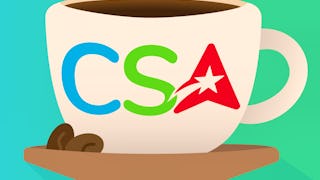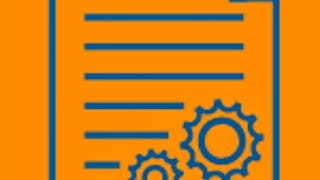Get started with the basics of Java, and prepare to teach others using the free, online interactive CS Awesome textbook. In this course for teachers we'll guide you both in learning Java concepts and skills but also in how to effectively teach those to your students.


Learn to Teach Java: Sequences, Primitive Types and Using Objects
This course is part of Learn to Teach Java Specialization

Instructor: Beth Simon
4,945 already enrolled
Included with
(38 reviews)
Skills you'll gain
Details to know

Add to your LinkedIn profile
See how employees at top companies are mastering in-demand skills

Build your subject-matter expertise
- Learn new concepts from industry experts
- Gain a foundational understanding of a subject or tool
- Develop job-relevant skills with hands-on projects
- Earn a shareable career certificate

There are 5 modules in this course
Meet Dr. Simon and fellow learners in this class! Find out what you’ll be doing and learning.
What's included
2 videos2 readings1 discussion prompt
Instructions are the basic building blocks for programs. The sentences in our "essay", if you will (not a popular analogy for students - but true). Using CS Awesome, we'll learn some basic instructions in Java -- which focus more on storing and manipulating data (numbers and words) than we did in most block-based programming languages.
What's included
6 videos3 readings3 assignments1 discussion prompt
This week we'll go deeper and engage with some resources to support your teaching. You'll explore some questions to use in classroom analysis discussions (Peer Instruction), learn how these concepts are commonly assessed, and prepare to help students who are having trouble with CS Awesome assessments. Finally, you can check your own Unit 1 Java and Java Teacher mastery on our end of Unit 1 quizzes.
What's included
7 videos2 readings2 assignments1 app item
One of the key features of Java (as well as some other modern programming languages) is that it is "object-oriented" -- that we can design programs based around modeling of objects as a combination of data and methods (or actions) on that data. Using CS Awesome, we'll learn how to use already defined classes (classes are types of objects), to increase our power in solving problems in Java.
What's included
16 videos1 reading7 assignments
This week we'll go deeper and engage with some resources to support your teaching. You'll explore some questions to use in classroom analysis discussions (Peer Instruction), learn how these concepts are commonly assessed, and prepare to help students who are having trouble with CS Awesome assessments. Finally, you can check your own Unit 2 Java and Java Teacher mastery on our end of Unit 2 quizzes.
What's included
4 videos2 assignments1 app item
Earn a career certificate
Add this credential to your LinkedIn profile, resume, or CV. Share it on social media and in your performance review.
Instructor

Offered by
Explore more from Education
 Status: Free Trial
Status: Free TrialUniversity of California San Diego
 Status: Free Trial
Status: Free Trial Status: Free Trial
Status: Free Trial Status: Free Trial
Status: Free TrialUniversity of California San Diego
Why people choose Coursera for their career




Learner reviews
38 reviews
- 5 stars
86.84%
- 4 stars
13.15%
- 3 stars
0%
- 2 stars
0%
- 1 star
0%
Showing 3 of 38
Reviewed on Apr 2, 2022
I like the course and the instructor teaches extremely well
Reviewed on Oct 17, 2021
Great example were used in this course which makes easy to get the concept of the topic.
Reviewed on Apr 23, 2020
First i will want say Thanks to my instructor "Beth Simon" because I learned every thing about Sequences, Primitive Types and Using Objects in java programming in simple way.

Open new doors with Coursera Plus
Unlimited access to 10,000+ world-class courses, hands-on projects, and job-ready certificate programs - all included in your subscription
Advance your career with an online degree
Earn a degree from world-class universities - 100% online
Join over 3,400 global companies that choose Coursera for Business
Upskill your employees to excel in the digital economy
Frequently asked questions
If you complete all courses in the Learn to Teach Java Specialization, then you can earn 4-graduate units from UC San Diego. Find out more on the the specialization FAQ.
To access the course materials, assignments and to earn a Certificate, you will need to purchase the Certificate experience when you enroll in a course. You can try a Free Trial instead, or apply for Financial Aid. The course may offer 'Full Course, No Certificate' instead. This option lets you see all course materials, submit required assessments, and get a final grade. This also means that you will not be able to purchase a Certificate experience.
When you enroll in the course, you get access to all of the courses in the Specialization, and you earn a certificate when you complete the work. Your electronic Certificate will be added to your Accomplishments page - from there, you can print your Certificate or add it to your LinkedIn profile.
More questions
Financial aid available,
¹ Some assignments in this course are AI-graded. For these assignments, your data will be used in accordance with Coursera's Privacy Notice.

